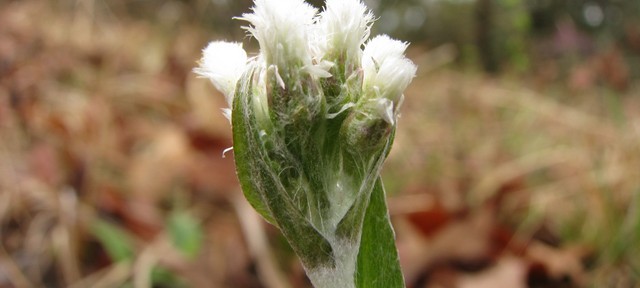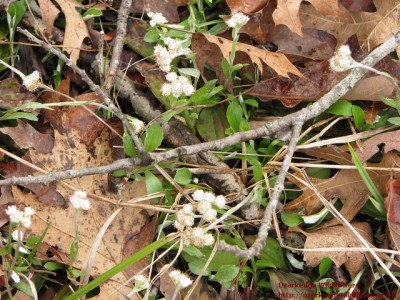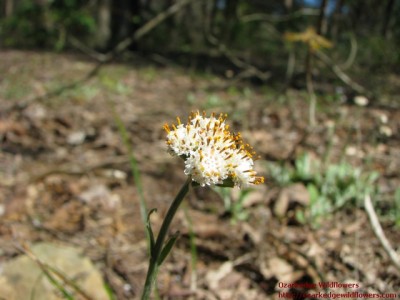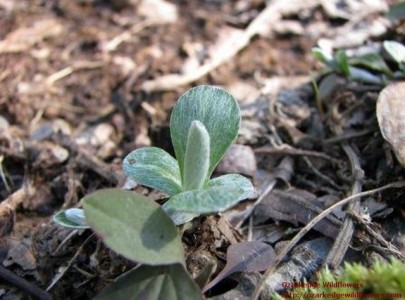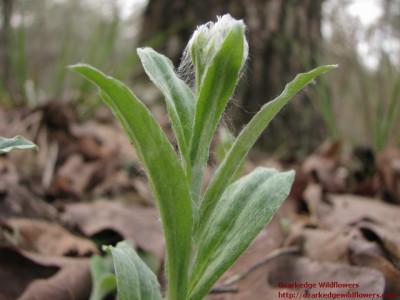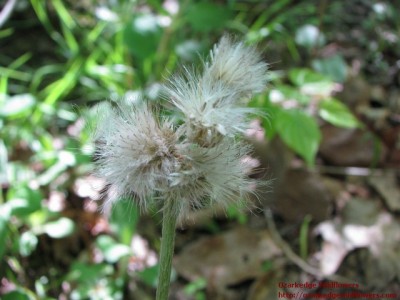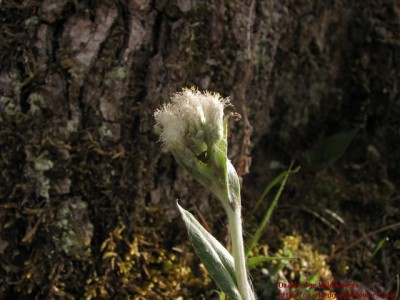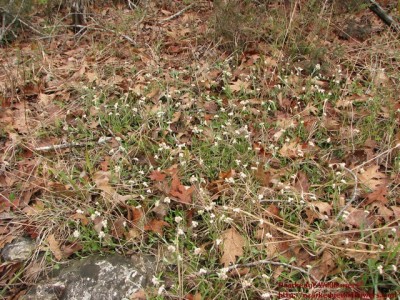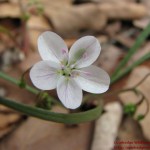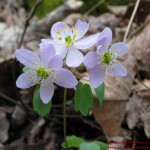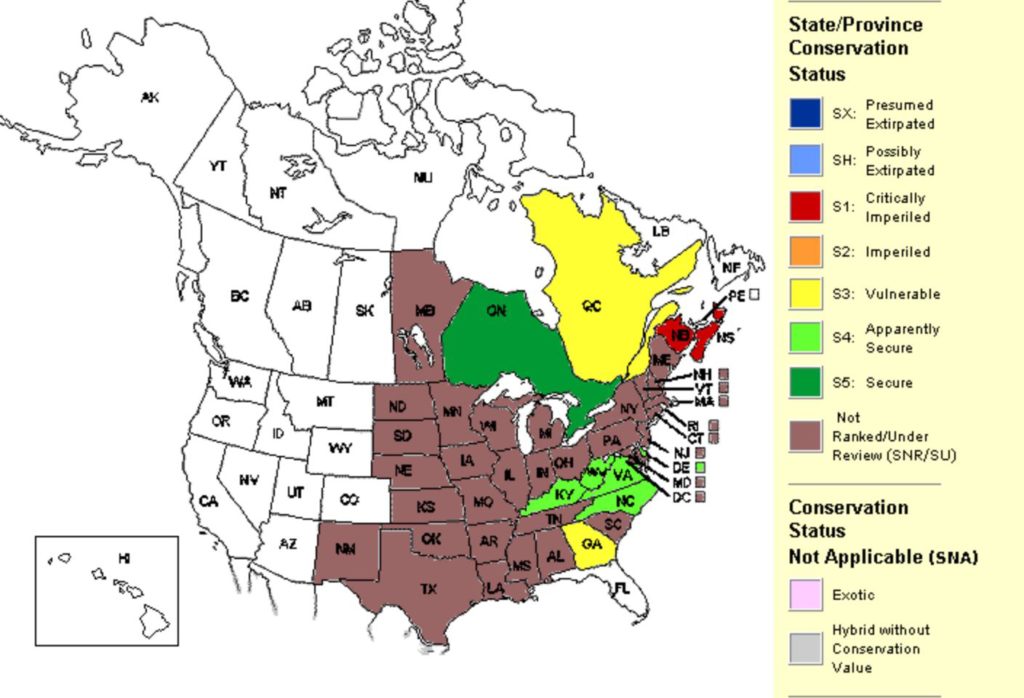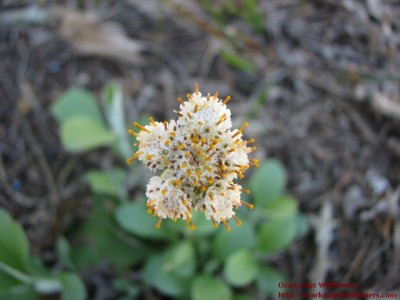Pussy Toes—what a neat sounding name. I first heard of these tiny flowers when I was visiting Garvan Woodland Gardens a few years ago. My husband and I were walking through the woodland gardens and I saw a sign for them. I looked around and didn’t see anything, so I kind of forgot about it. That is, until I saw these cute little flowers on Ozarkedge and looked them up, just to discover they were Pussytoes! Then, I realized, that I was probably just overlooking the plants at Garvan Gardens because they weren’t yet in bloom. If you aren’t paying attention, they are easy to miss.
Group of Pussy toes happily blooming in March
Latin Name/Common Name– The Latin name for Pussy Toes is not exactly easy to remember if you aren’t a botanist–Antennaria Parlinii. It was formerly known as Antennaria Plantaginifolia–which is even a bit more difficult. Obviously, Pussy Toes is a catchy name. Even so, it takes a bit of imagination to apply the name to the flower. But, in the early bloom stage, you can somewhat see the soft paw of a cat in the shape of the fuzzy flower head.
Bloom Color- The blooms are a soft white with a slightly hairy or fuzzy appearance. They are either male or female and can be distinguished by the stamens. Male flowers have yellow stamens and female flowers tend to have pinkish stamens. The male and female flowers appear on separate plants. Male plants are shorter than the female plants and provide the pollen. The flowers are small, less than a half inch in diameter.
Here’s an example of a male flower.
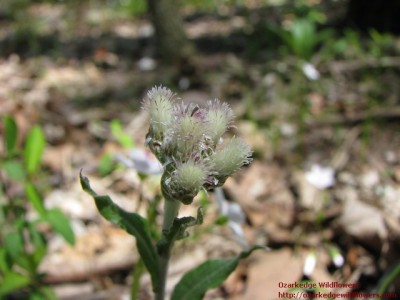 The pink stamens indicate this flower is female.
The pink stamens indicate this flower is female.
Description- Pussy Toes have alternate, pale green leaves that look soft and are woolly on the underside. The downy stem arises from a basal rosette and is covered with dense hairs. The plants lie low to the ground in early spring and eventually grow up to about 10- 15 inches tall.
Wooly young leaves of Antennia parlinii in March
Bloom Time- On Ozarkedge, I found Pussy Toes blooming as early as March. They bloom sporadically until June.
New bloom in April
Going to seed in May
Habitat– I find them growing at the edges of cedar or oak trees in the dryer areas of open woods, somewhat removed from the spring ephemerals in the moister areas.
Blooming at the base of an oak tree
Colony of Antennaria in rocky outcropping of woodland edge
What’s Growing Nearby?- Spring Beauties and Rue Anenome seem to be their closest friends.
Claytonia Virginica (Spring Beauty) and Anemonella thalictroides (Rue anemone)
Endangered List- Fortunately, Antennaria parlinii is not listed as Endangered on the USDA plant site. Natureserve shows Pussytoes as Vulnerable in Georgia. While it’s Apparently Secure in Kentucky, North Carolina, Virginia and West Virginia, it’s Not Ranked anywhere else in North America.
*NatureServe. 2018. NatureServe Explorer: An online encyclopedia of life [web application]. Version 7.1. NatureServe, Arlington, Virginia. Available http://explorer.natureserve.org. (Accessed: February 10, 2019 ).
Interesting Tidbits– The leaves are a preferred food for deer, quail and rabbits.
By the way, if you haven’t visited Garvan Woodland Gardens, it’s a huge treat to do so. Here’s a link to help you find your way http://www.garvangardens.org/. It will take you one glorious day to walk through the gardens–there are fabulous trees, iris, rhodendrons and so much more. The gardens are on Lake Hamilton and surrounded by the Ouachita Mountains in Arkansas.
